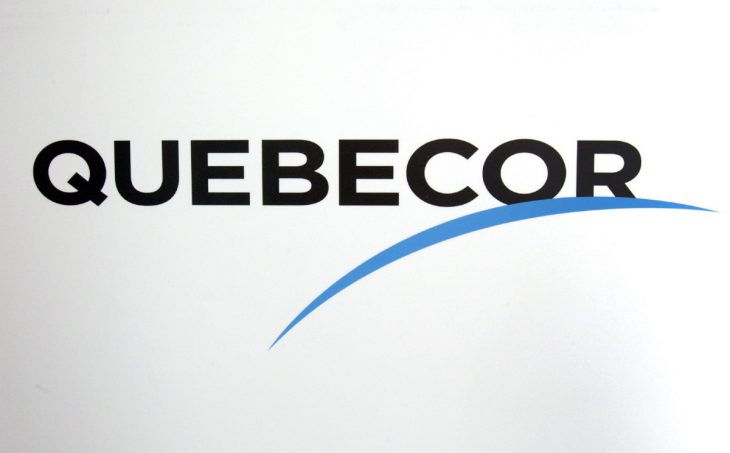
BANFF – Quebecor Media put on one of the best scripted and packaged panels I've ever attended at Banff – and they made a very convincing case for the power of partnerships.
As the key commercial creator in our French-language market, and despite the modest market size, they've seen their CMF budgets increase by 40%. Indeed, last year, 18 of their 27 CMF funded projects enjoyed over $1 million in returns, according to the company’s presentation.
TVA often benefits from 45%+ market share – with La Voix (The Voice) frequently in the 50%+ viewership zone and critiqued as "the best show of its kind in the world"… quite literally the best adapted TV anywhere! Goji, their online offering, has 7 million-plus followers. It would be a serious oversight if English-speaking Canada overlooked this media juggernaut.
(Heritage Minister Mélanie Joly certainly didn't – as she made a surprise appearance at this panel – despite the 500 meeting requests she gets per day – to emphasize her aspiration that "English and French markets will work more together, a cross pollination".
Joly cited the example of current NFB-Vice collaboration on a virtual reality project created from Prime Minister Justin Trudeau’s visit to Shoal Lake, MB. The documentary, Cut Off, is being billed by Vice as the first VR documentary with a sitting world leader. The release announcing the documentary in May didn’t mention the VR component, but the company announced in Banff it’s coming.
As if the point had not been made forcefully enough, the Minister continued "we have 17 agencies under Heritage, levers to assist that ecosystem.”)
Ginette Viens, TVA’s vice-president brand management and content, offered that she works by genre not by platform – and while Quebec obviously has different linguistic, cultural and social habits – Quebecor sees itself more and more as a testing ground for proof of concept.
Currently, NBCU is working with them on a variety show proof of concept titled For Sarah – a project aiming to attract younger viewers, ideally in the 21-34 age group.
The company is not allergic to creative risk taking either. For example, on the For Sarah project they released the first episode on YouTube – then when the same episode aired on linear TV it over-indexed by 150% in precisely that younger age cohort.
Viens then embraced an entirely different branding strategy to capture the 35-54 demographic. Overall, it comes down to three key elements for Quebecor: a great story, targeted marketing strategies, and a strong team.
Two projects underlined these attributes: The Killer Inside and Blue Moon.
With The Killer Inside series they emphasized audience involvement, plus, QMG engineered three successful runs on three platforms – OTT, specialty, and TVA linear – reaching three different audiences and often with the highest tune-in numbers on each, Viens said.
Throughout, Viens pushes the benefits of independent producers working together with QMG – and Blue Moon stands out as a perfect case in point with its prestigious nomination at this year's Banff Rockie Awards.
Michel Trudel, President of MELS (acquired by Quebecor), builds on this narrative by back-grounding the reasons why he launched a one-stop production business back in 1988. MELS "has everything that a producer needs, and if we don't have it (he muses) Quebecor will buy it!" he said.
That includes 20 stages and 75,000 square feet of production offices.
Trudel claims that MELS is "the best facility in North America… 15 minutes from the airport, five minutes from downtown (because creative people like to have fun after work), and comes with good tax credits and a bilingual city (Montreal)".
Fox, Sony, and Paramount are among those who have become clients with projects like X-Men: Apocalypse.
Clearly, Quebecor Media is pushing partnerships, is open to business with producers, and asserts world-class expertise in "following the consumer on whatever platform,” he added.
To reinforce that last point, Caroline Roy, VP digital, speaks to the company’s launch of Goji, its talent collective for YouTubers, as a key source for creating partnerships beyond YouTube, to include Twitter and a range of OTT players. Quebecor is very much part of the Multi-Channel Network (MCN) world, affiliating with multiple YouTube channels on partnerships and monetization, too.
According to Roy, 50% of ad buys in the 15-25 age bracket result from the influence of "YouTube stars". Interestingly, "there are no frontiers to digital… and 25% of that talent comes from outside of Quebec".
Even more intriguing is that Goji stars are little enticed by the draw of getting onto mainstream TV, "they all want to write a book” – which may say something about Quebecor's clout in the "dead tree" publishing world.
And the key to it all, says Roy, is "targeting audiences with authentic content" and experimenting.
Case in point, the company is producing a youth focused "cross-over series" next year – where "a YouTuber plays a role in the shooting of the show, then discusses it on Goji, and the program airs on linear", says Roy.


